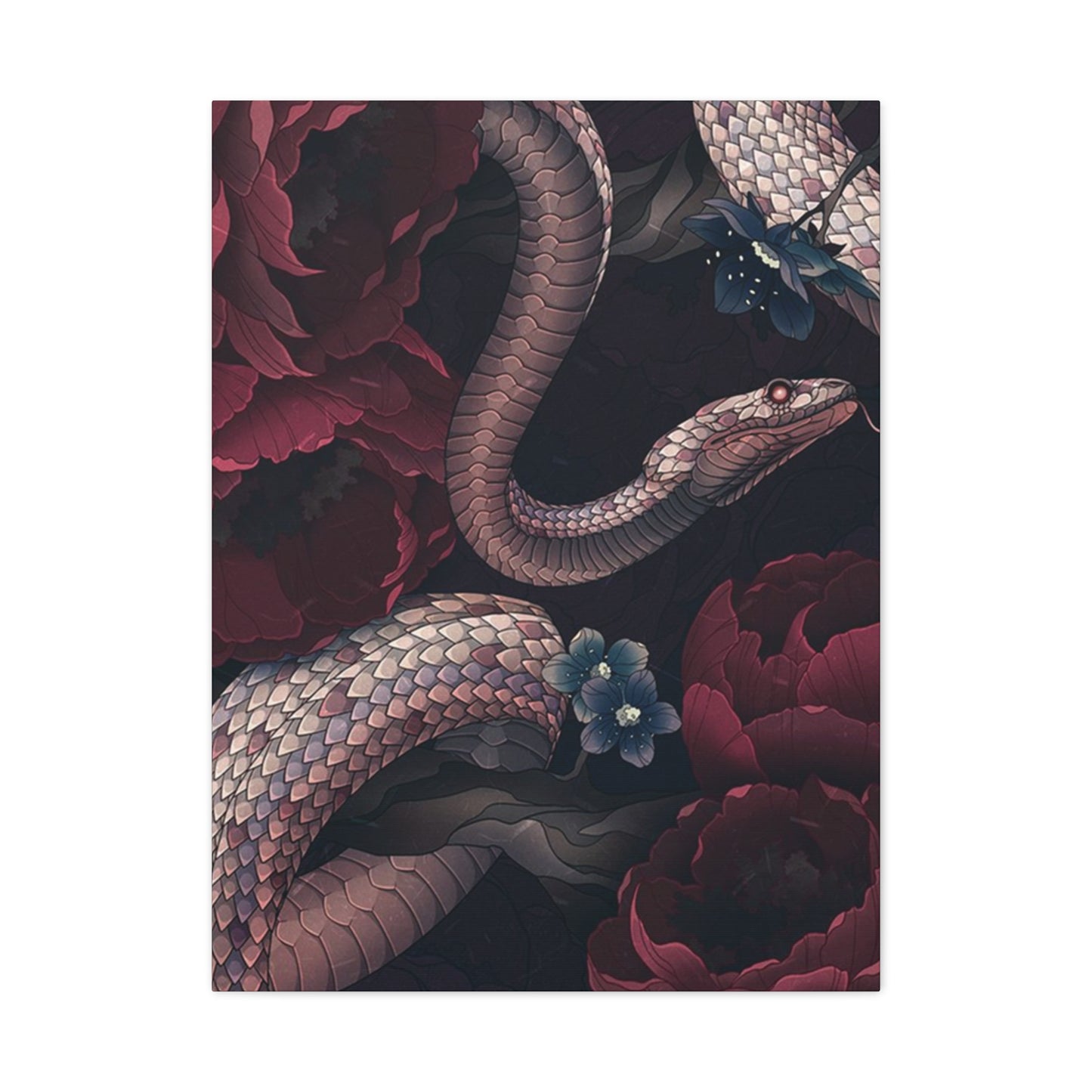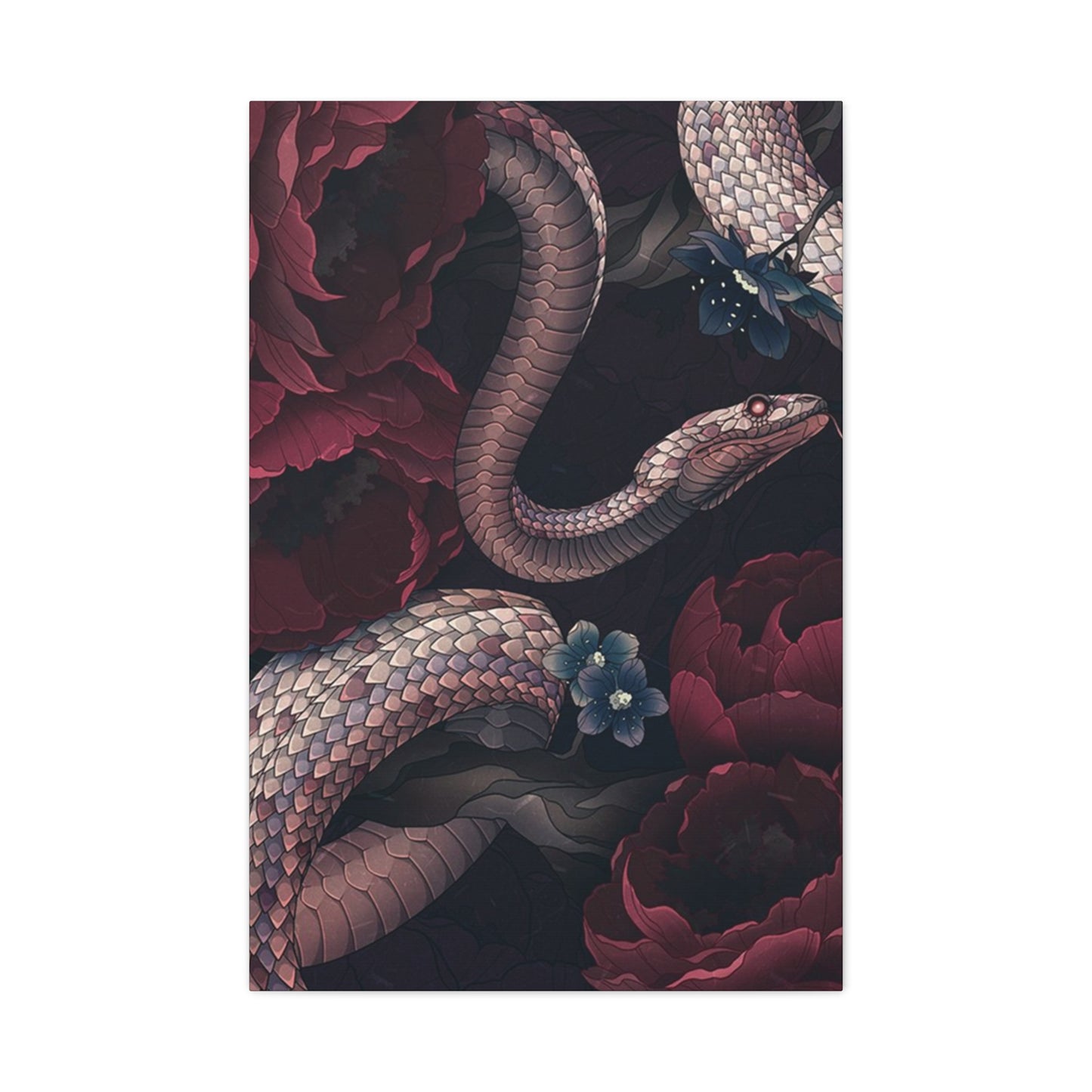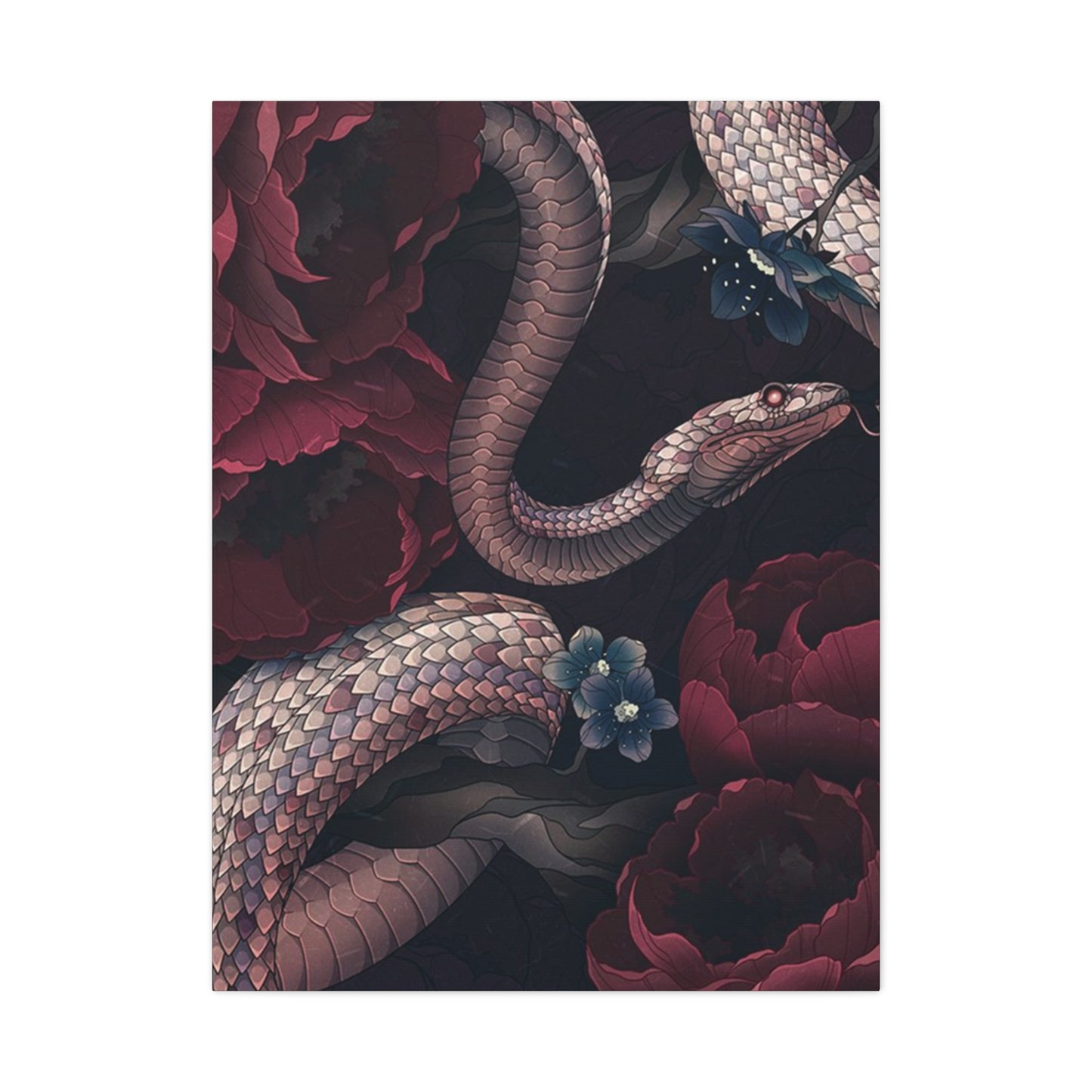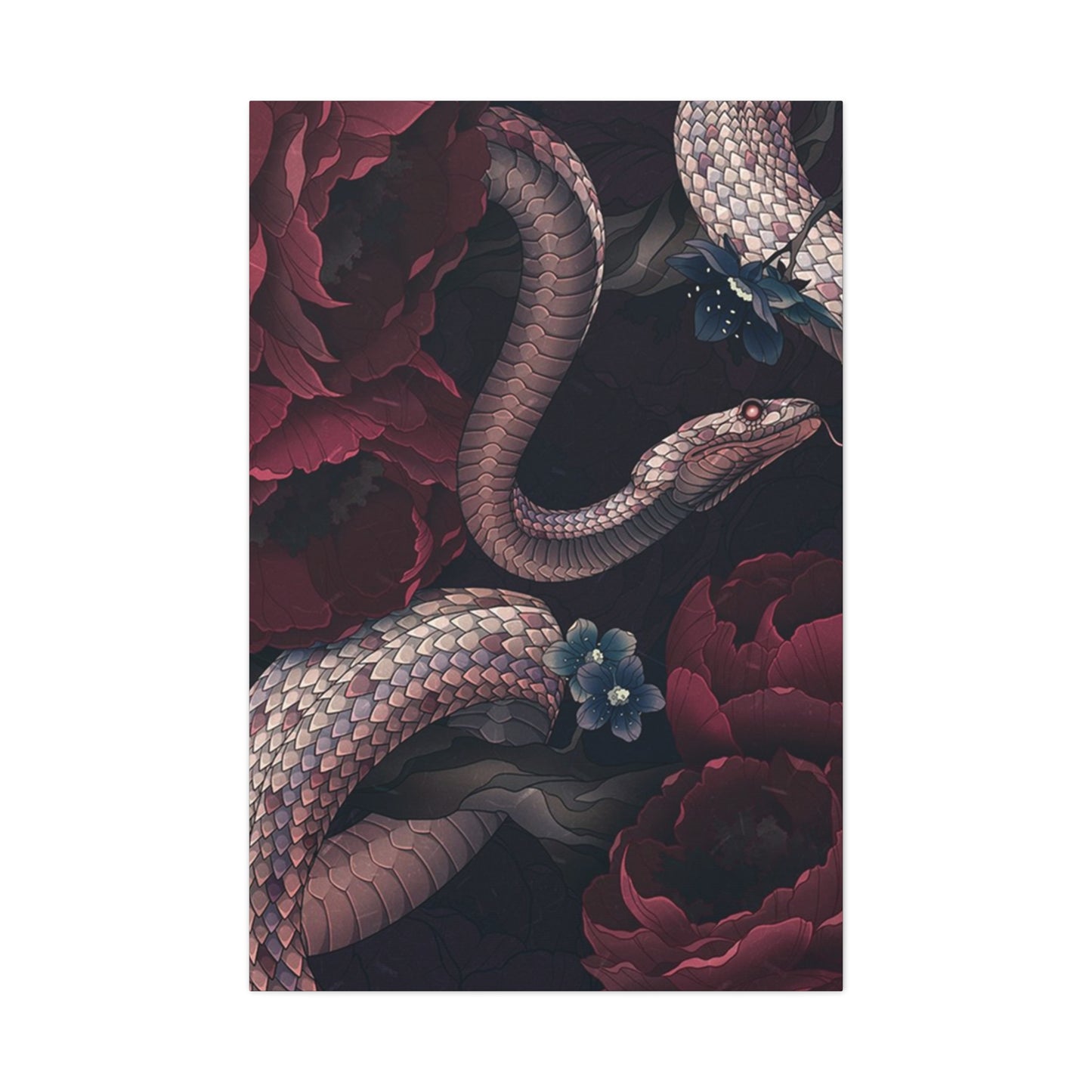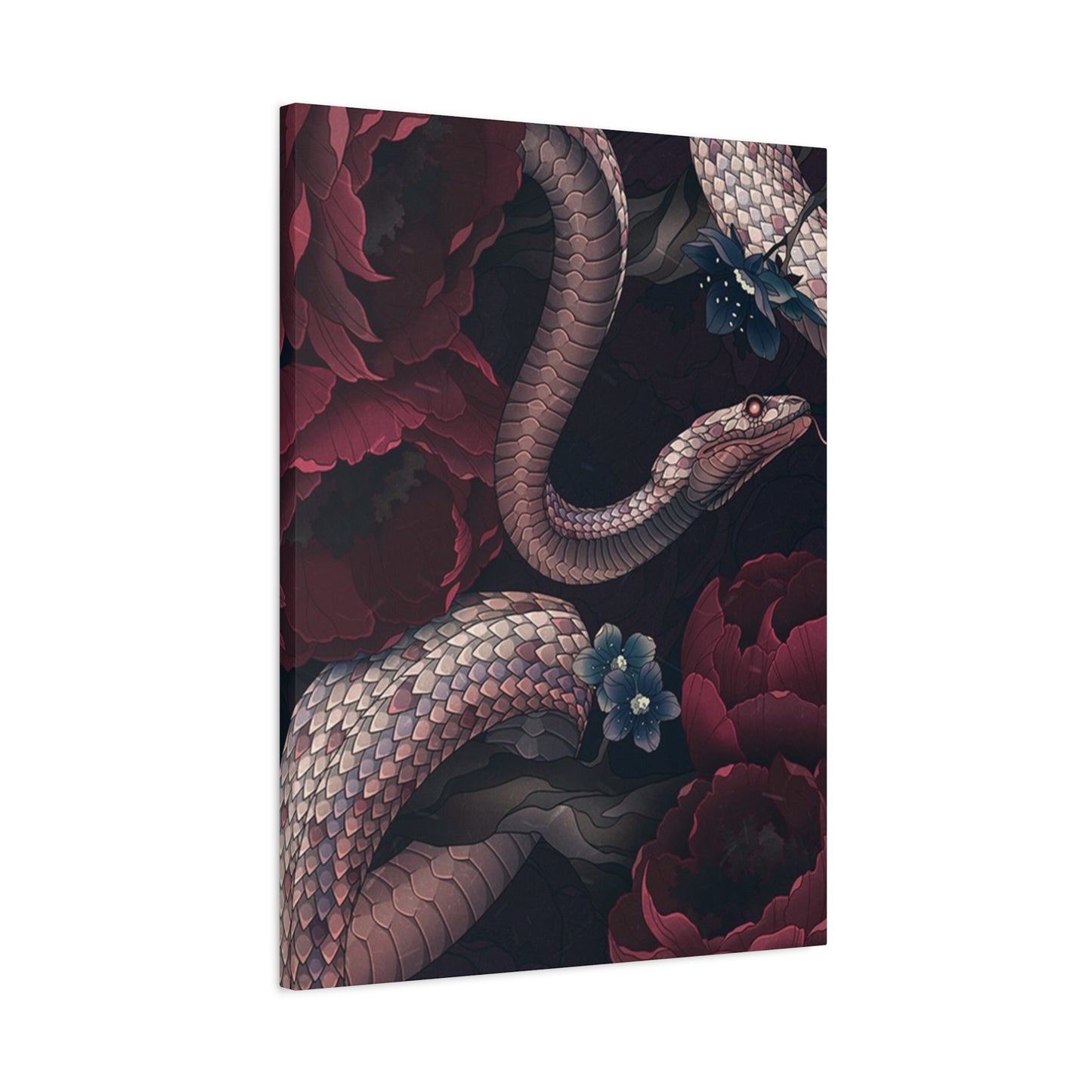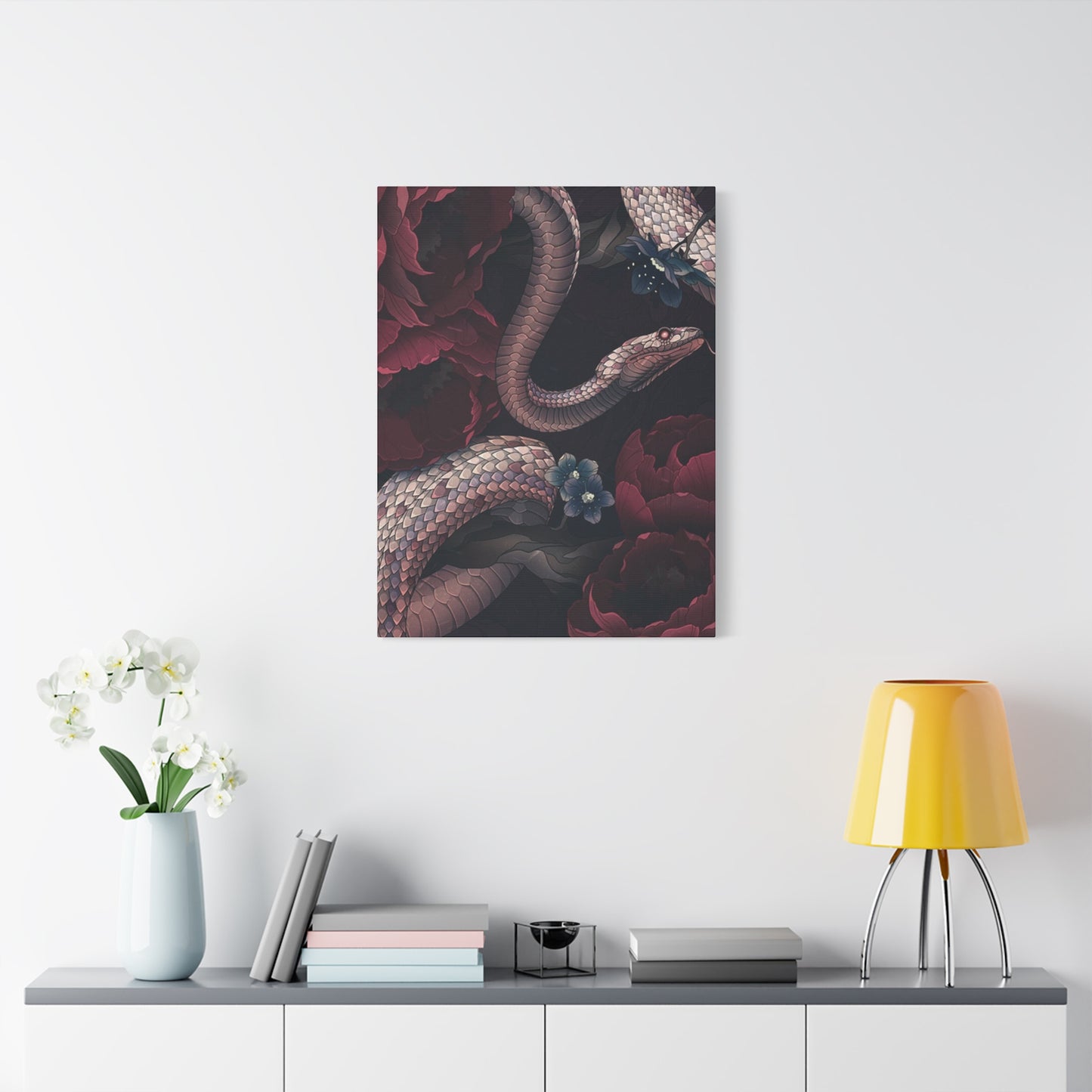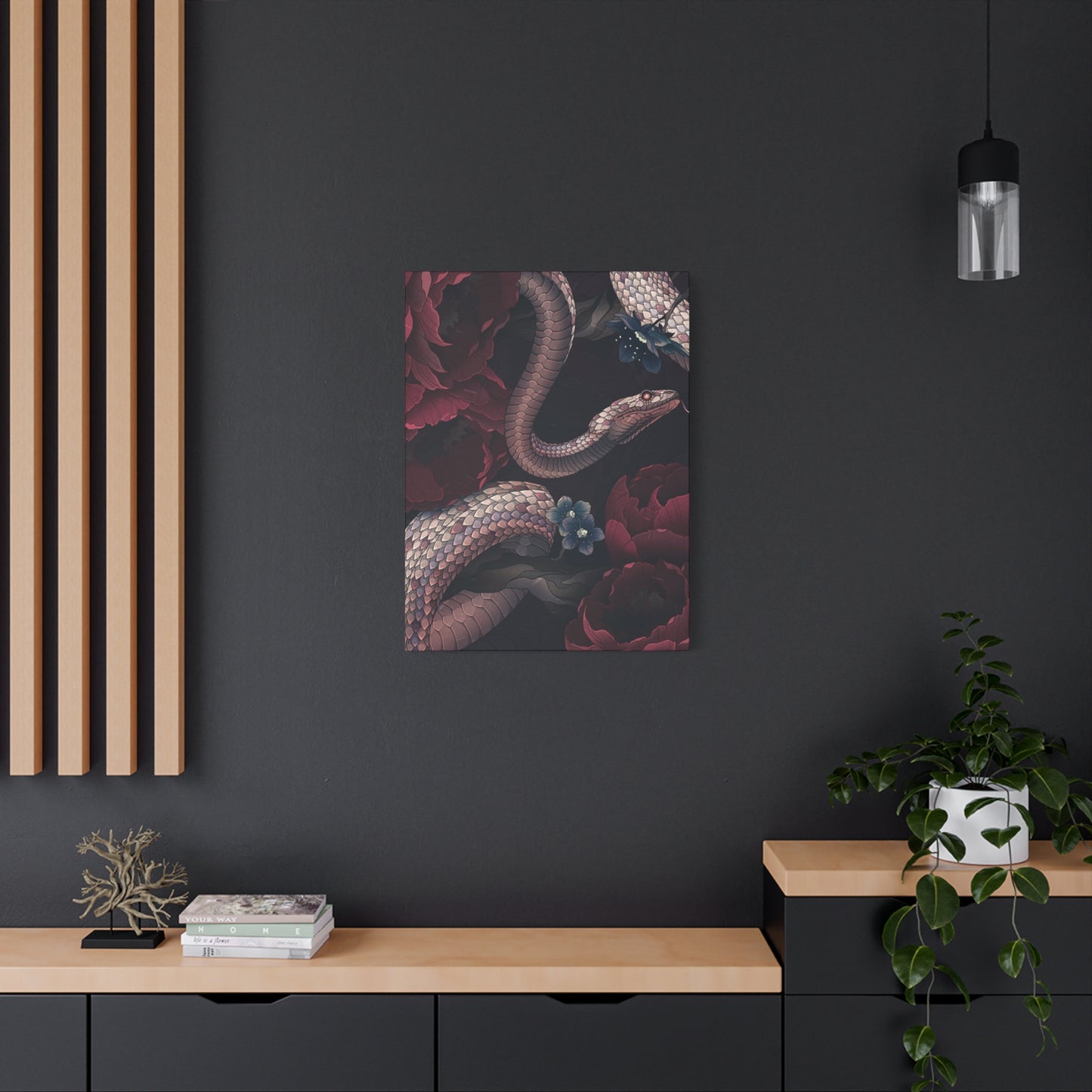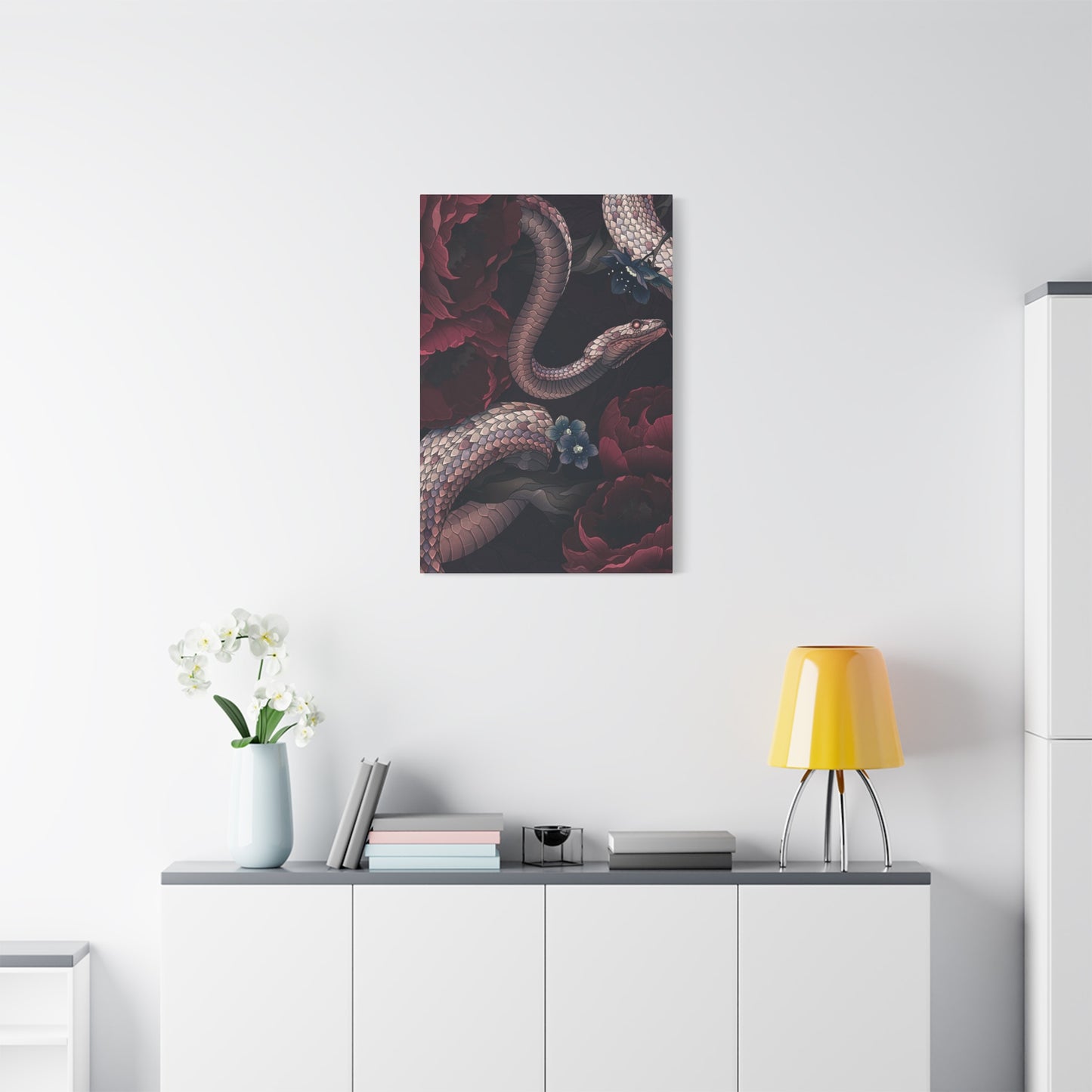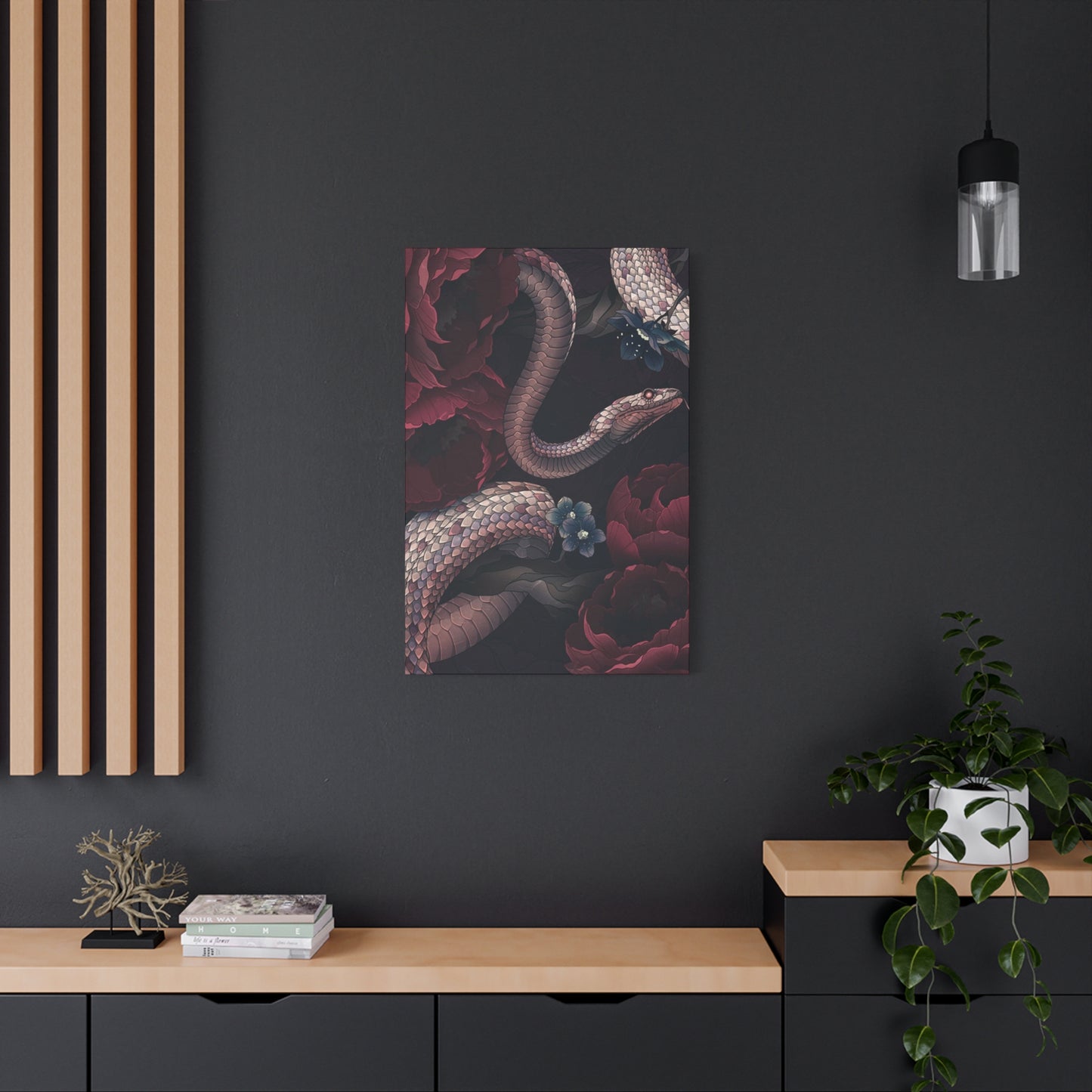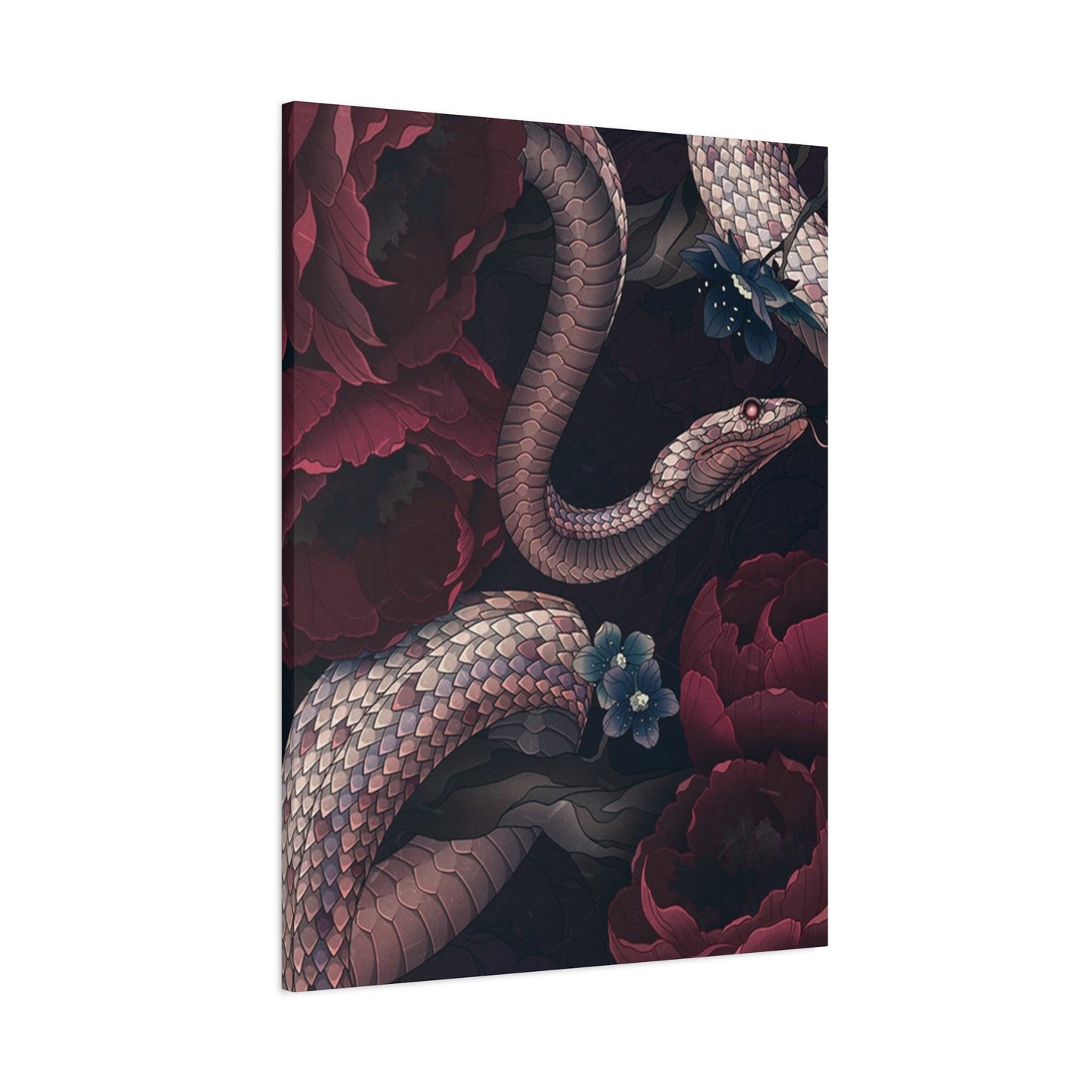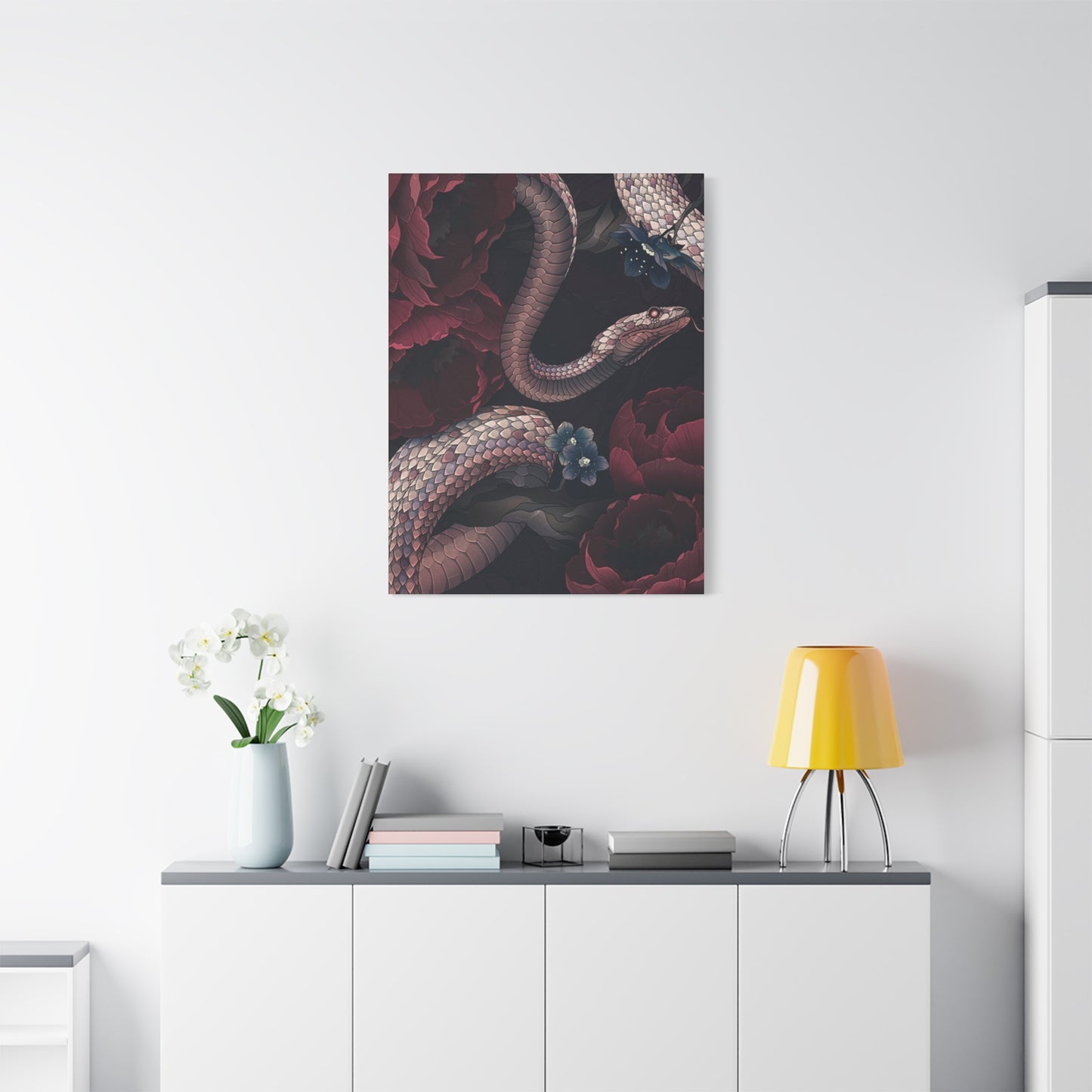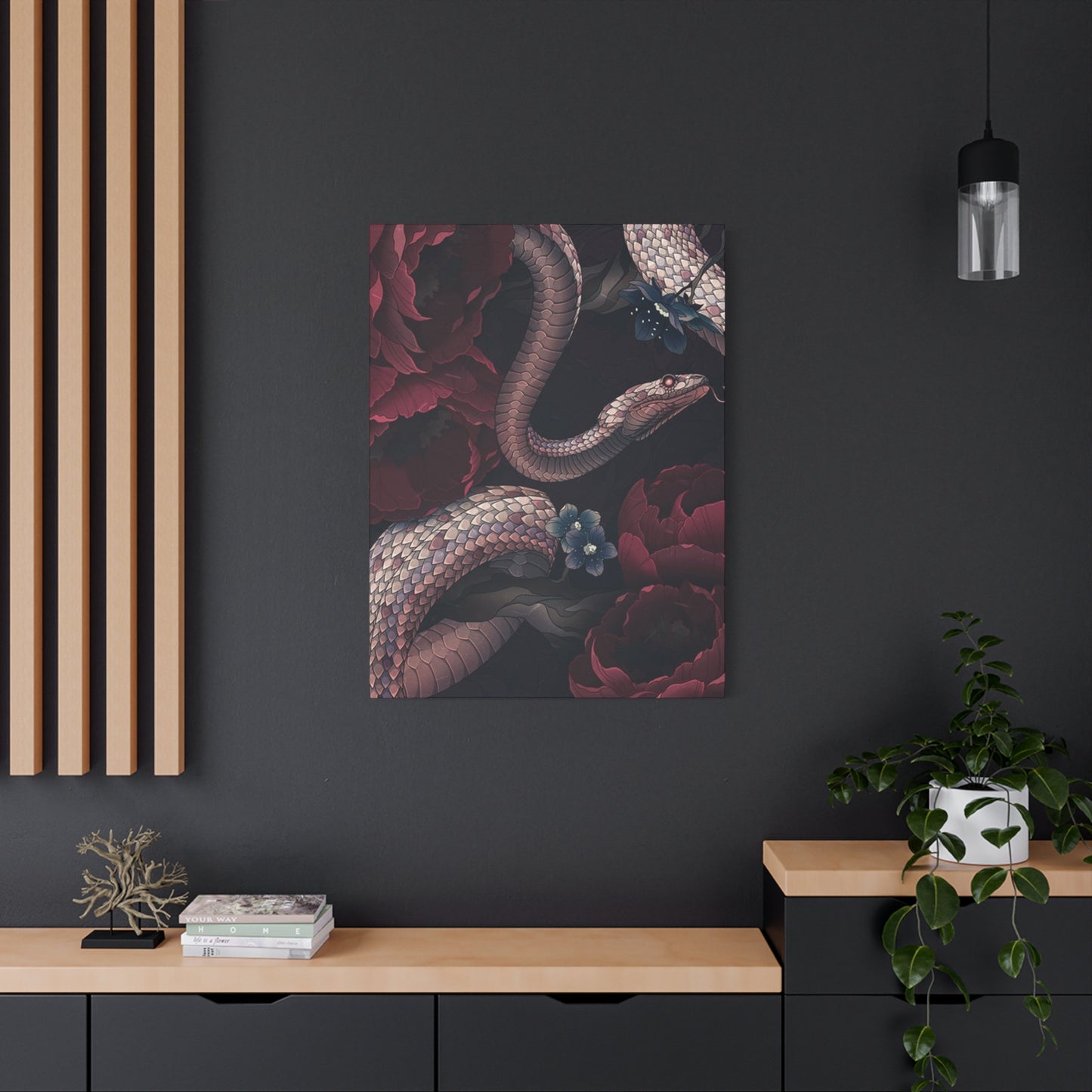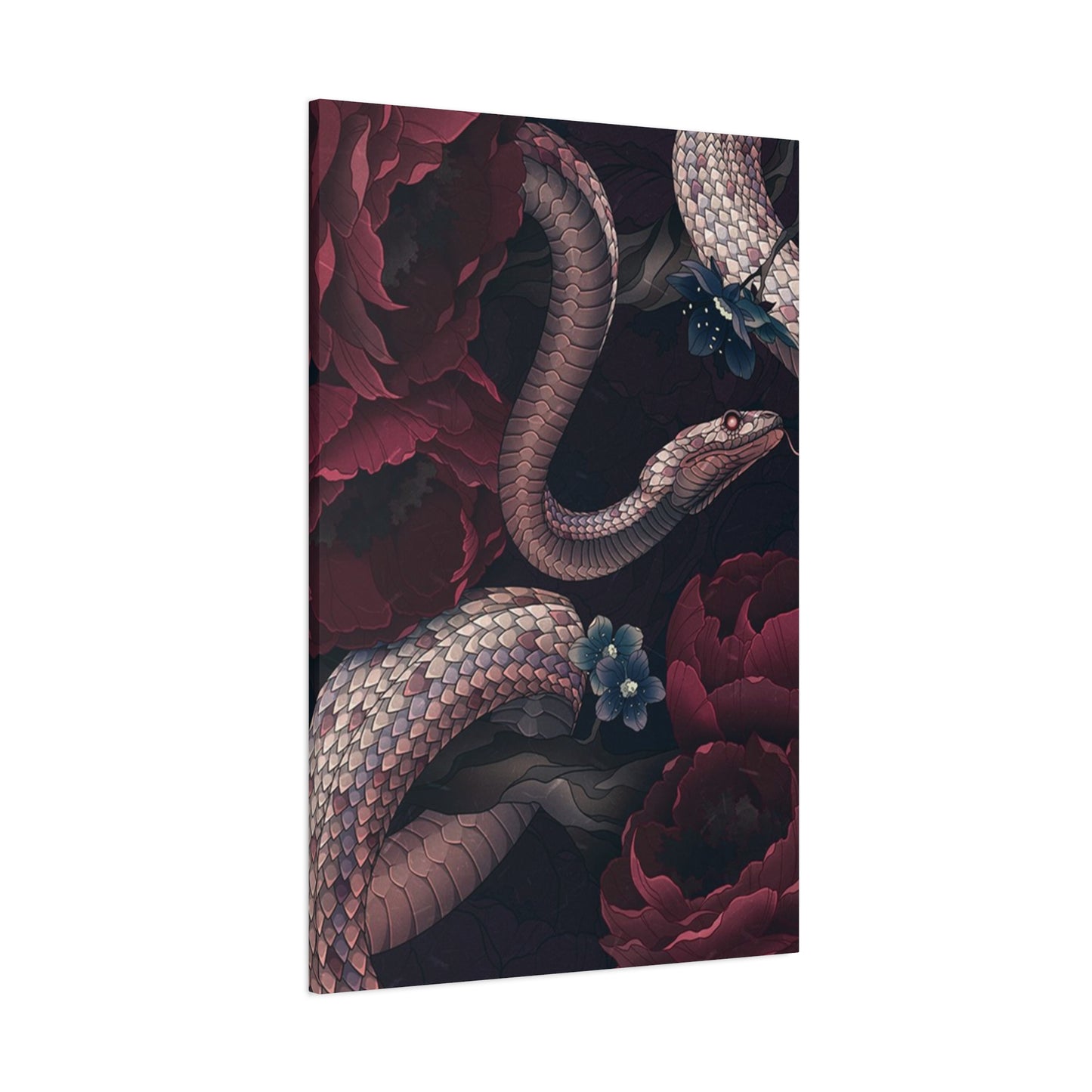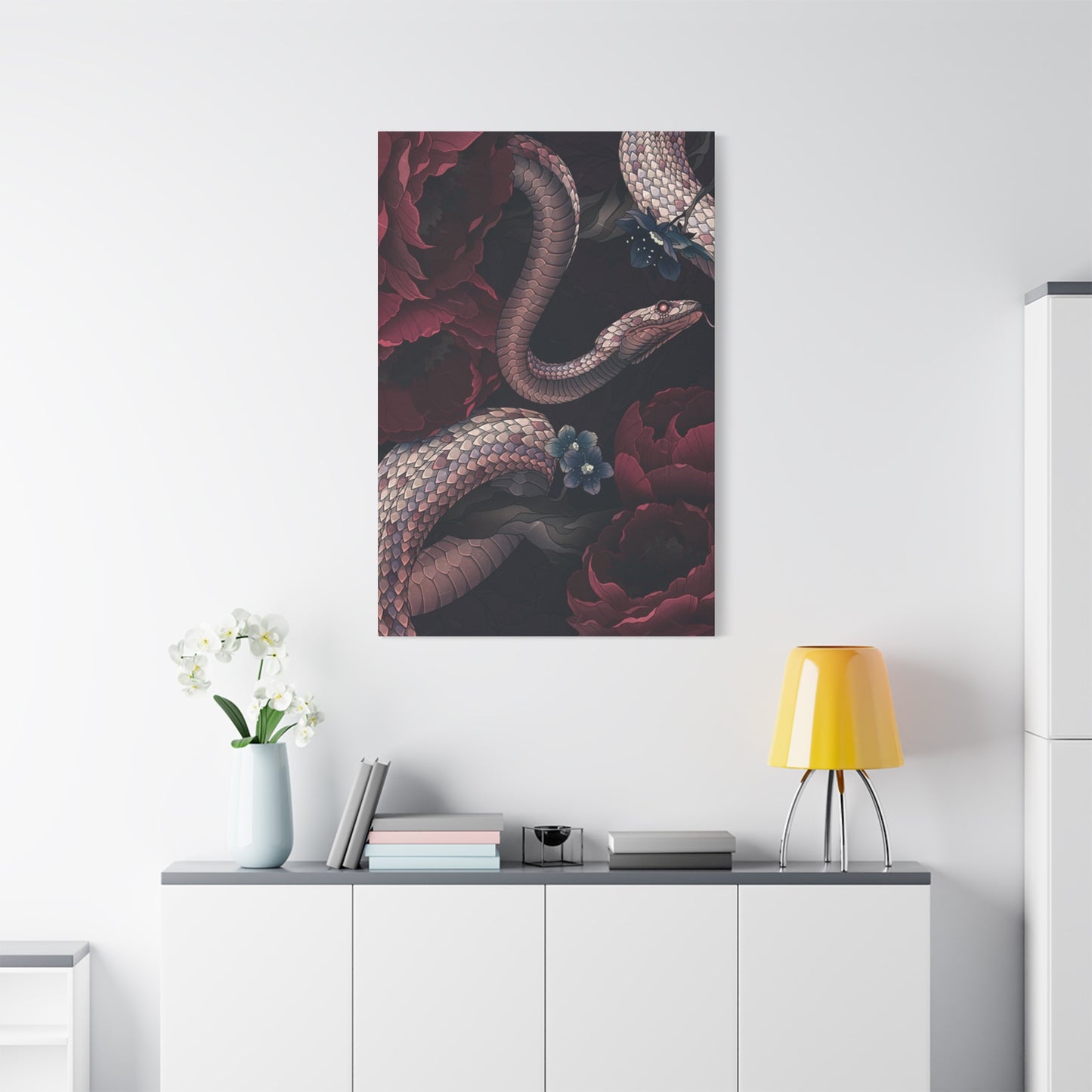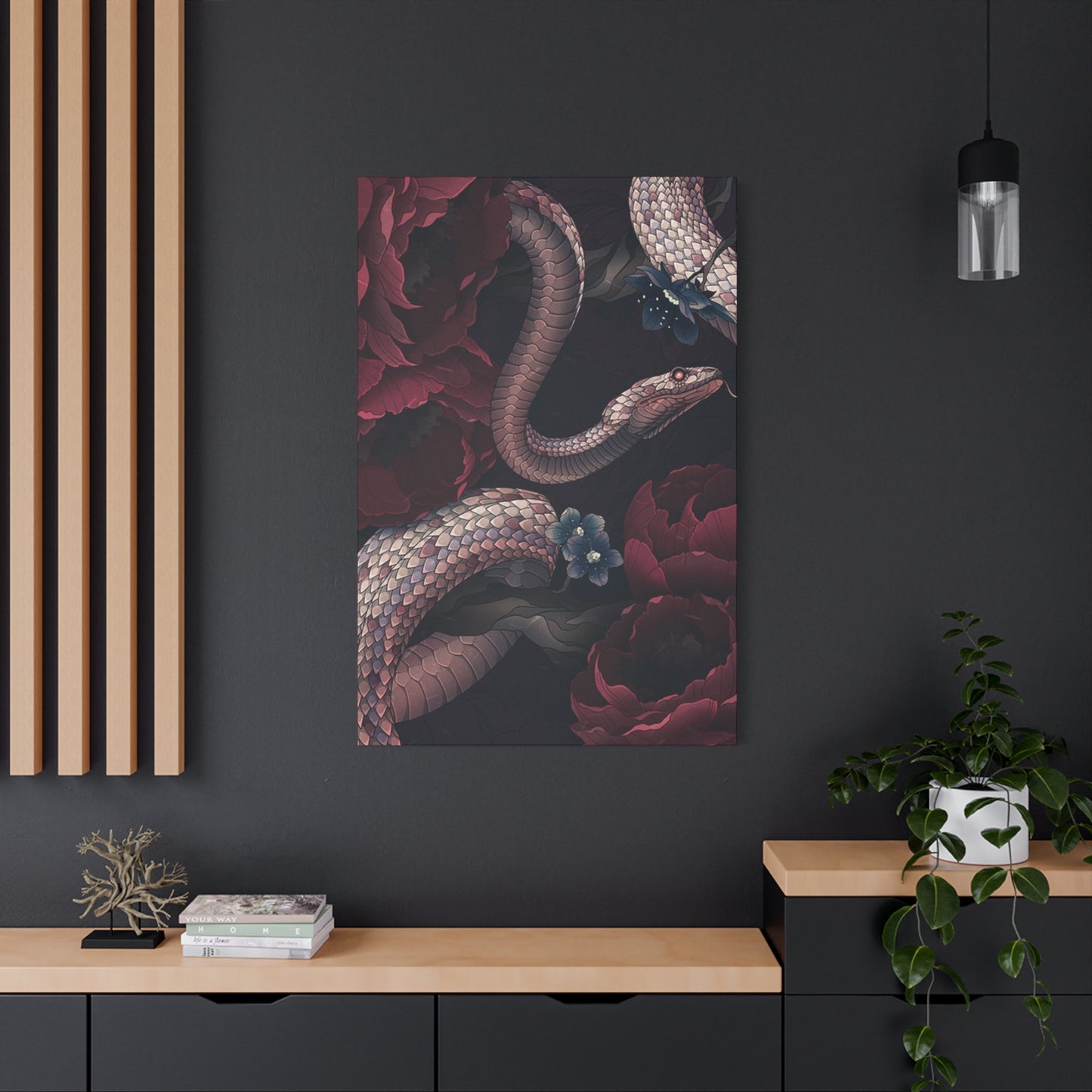Striking Rose and Snake Wall Art: Mastering the Balance of Beauty and Mystique
The captivating fusion of roses and serpents in artistic expression has fascinated creators and collectors for centuries. These powerful symbols, when combined in visual artworks, create a mesmerizing duality that speaks to the deepest aspects of human nature. Rose and snake wall art represents one of the most intriguing artistic combinations available today, offering viewers a chance to explore themes of beauty, danger, transformation, and eternal cycles of life and death.
This comprehensive exploration delves into every aspect of incorporating rose and serpent imagery into your living environment, from understanding the profound symbolism behind these motifs to selecting the perfect placement for maximum visual impact. Whether you're drawn to the gothic romance of traditional interpretations or the sleek sophistication of contemporary abstract designs, this guide will help you navigate the rich world of serpentine and floral artistic combinations.
The appeal of rose and snake artwork lies in its ability to communicate complex emotions and ideas through visual metaphor. These pieces serve as conversation starters, meditation focal points, and expressions of personal philosophy all rolled into one stunning visual package. As we journey through the various styles, meanings, and applications of this compelling art form, you'll discover how to harness its power to transform your environment into a reflection of your deepest aesthetic sensibilities.
Harmonizing Elegance with Peril: The Art of Rose and Serpent Imagery
The artistic pairing of roses with serpents creates a powerful visual tension that has captivated viewers across cultures and centuries. This combination represents one of nature's most compelling contrasts, where the delicate beauty of flowering blooms meets the primal power of serpentine forms. The result is artwork that challenges viewers to confront their preconceptions about beauty, danger, and the complex relationships between opposing forces in nature.
Rose and serpent compositions work on multiple levels simultaneously, offering both immediate visual appeal and deeper symbolic resonance. The soft, rounded petals of roses provide a counterpoint to the sinuous, scaled bodies of snakes, creating dynamic compositions that draw the eye and hold attention. This contrast extends beyond mere visual elements to encompass cultural and psychological associations that have developed over millennia of human artistic expression.
Contemporary artists working with these motifs often explore themes of duality, transformation, and the cyclical nature of existence. The rose, traditionally associated with love, beauty, and passion, takes on new dimensions when paired with the serpent, a symbol of wisdom, renewal, and hidden knowledge. This combination speaks to the complexity of human experience, where beauty and danger often coexist, and where transformation requires both creation and destruction.
The technical execution of rose and serpent artwork varies dramatically depending on the artist's intention and medium. Some creators emphasize the naturalistic rendering of both elements, creating hyperrealistic compositions that celebrate the intricate details of petal textures and scale patterns. Others abstract these forms into flowing, intertwined shapes that suggest rather than explicitly depict the relationship between floral and serpentine elements.
Color plays a crucial role in how these compositions communicate their message. Deep reds and passionate pinks in the roses can be balanced against the cool greens and earth tones of serpent skin, or artists might choose to work in monochromatic palettes that emphasize form and texture over chromatic contrast. The interplay of warm and cool tones, light and shadow, creates visual rhythms that guide the viewer's eye through the composition while building emotional resonance.
Modern interpretations of rose and serpent imagery often incorporate elements from various artistic traditions, blending realistic botanical illustration with mythological symbolism, or combining classical composition techniques with contemporary color theory. This fusion of old and new creates artworks that feel both timeless and thoroughly modern, appealing to viewers who appreciate traditional craftsmanship while embracing innovative artistic vision.
The placement of these elements within the composition also carries significant meaning. Serpents might be shown emerging from rose blooms, suggesting hidden dangers within apparent beauty, or roses might be depicted growing from serpentine forms, implying that beauty can arise from unexpected sources. Some compositions show these elements in dynamic interaction, while others present them in peaceful coexistence, each interpretation offering different insights into the relationship between beauty and power.
Contemporary Approaches to Rose and Serpent Canvas Artwork
The world of canvas prints featuring roses and serpents has expanded dramatically in recent years, with artists and printmakers exploring innovative approaches to this classic pairing. Contemporary rose and serpent canvas art encompasses a wide range of styles, from photorealistic digital paintings to abstract interpretations that reduce these natural forms to their essential characteristics. This diversity ensures that collectors can find pieces that resonate with their personal aesthetic preferences while maintaining the powerful symbolic impact of the rose-serpent combination.
Digital art has revolutionized how artists approach rose and serpent imagery, allowing for precise control over every aspect of the composition. Digital artists can manipulate lighting, texture, and color with unprecedented precision, creating works that achieve levels of detail and atmospheric effect that would be challenging to accomplish with traditional media. These digital creations, when translated to high-quality canvas prints, retain their visual impact while becoming accessible to a broader audience of art enthusiasts.
Watercolor-inspired canvas prints represent another popular approach to rose and serpent themes. These pieces capture the flowing, organic qualities that make watercolor such an ideal medium for depicting natural subjects. The transparent layers of color and soft edge transitions characteristic of watercolor technique lend themselves beautifully to serpentine forms, while the ability to achieve both delicate washes and intense color concentrations makes it perfect for rendering rose petals in all their varied states of bloom.
Mixed media approaches have gained significant popularity in contemporary rose and serpent canvas art. These pieces might combine photographic elements with painted or drawn components, or incorporate textural elements that add physical dimension to the printed surface. Some artists create digital collages that blend vintage botanical illustrations with contemporary serpent photography, creating layered compositions that speak to both historical artistic traditions and modern aesthetic sensibilities.
Minimalist interpretations of rose and serpent themes focus on essential forms and limited color palettes to create maximum impact with minimal elements. These pieces often work with silhouettes, line drawings, or single-color treatments that emphasize the inherent drama of the rose-serpent pairing without relying on complex details or elaborate color schemes. The resulting artworks possess a graphic quality that works particularly well in contemporary residential and commercial environments.
Surrealist influences appear frequently in modern rose and serpent canvas art, with artists creating dreamlike compositions that challenge logical relationships between elements. These pieces might show roses blooming from serpent scales, or serpents with petal-like skin patterns, creating visual puzzles that engage viewers in active interpretation. The surrealist approach allows artists to explore the psychological and emotional aspects of the rose-serpent relationship in ways that purely realistic depictions cannot achieve.
Street art and graffiti aesthetics have also found their way into rose and serpent canvas prints, bringing urban edge to this traditionally romantic pairing. These pieces often incorporate bold lines, spray paint effects, and graphic elements that give classic floral and serpent motifs a contemporary, rebellious energy. The contrast between the refined associations of rose imagery and the raw power of street art creates dynamic tension that appeals to younger collectors and those seeking edgier decorative options.
Botanical illustration traditions continue to influence contemporary rose and serpent canvas art, with many artists drawing inspiration from historical scientific drawings and field guides. These pieces emphasize accuracy and detail in their depiction of both plant and animal subjects, often including annotations or decorative borders that reference the aesthetic conventions of scientific illustration. The result is artwork that celebrates both the beauty and the knowledge aspects of natural history study.
Symbolic Significance of Rose and Serpent Combinations in Home Environments
When rose and serpent imagery enters residential environments, it carries with it a complex web of symbolic meanings that can profoundly influence the atmosphere and energy of a home. These artworks serve as more than mere decoration; they become focal points for contemplation and conversation, inviting residents and guests to engage with deeper questions about beauty, nature, and the human condition. The symbolic weight of this imagery makes it particularly effective for creating distinctive, memorable environments that reflect the personality and values of their inhabitants.
The rose, in its various forms and colors, has accumulated centuries of symbolic associations across different cultures. Red roses traditionally represent passionate love and desire, while white roses symbolize purity and new beginnings. Pink roses suggest gentleness and appreciation, and yellow roses convey friendship and joy. When these meanings intersect with serpent symbolism within a single artwork, the result is a rich tapestry of potential interpretations that can shift depending on the viewer's perspective and the specific context of the piece.
Serpent symbolism is equally complex and varies significantly across cultures and historical periods. In some traditions, serpents represent wisdom, healing, and renewal, drawing on their natural ability to shed their skin as a metaphor for transformation and rebirth. Other cultural contexts associate serpents with temptation, danger, or hidden knowledge, reflecting humanity's complex relationship with these powerful creatures. When combined with rose imagery, these associations create artworks that can simultaneously suggest beauty and danger, wisdom and temptation, renewal and destruction.
The psychological impact of rose and serpent imagery in residential settings depends largely on the specific treatment and context of the artwork. Pieces that emphasize the protective or nurturing aspects of serpents, perhaps showing them coiled around roses in a guardian-like posture, can create feelings of security and natural harmony. Conversely, compositions that highlight the tension or conflict between these elements might generate more dynamic, energizing effects that stimulate conversation and contemplation.
Color choices significantly influence how these symbolic elements are interpreted within home environments. Warm, rich colors tend to create intimate, passionate atmospheres that work well in bedrooms or other private areas, while cooler, more muted palettes can create contemplative, meditative environments suitable for studies or reading nooks. The interplay between rose and serpent colors within a single piece adds another layer of symbolic complexity, as viewers unconsciously respond to these chromatic relationships.
The size and placement of rose and serpent artwork also affects its symbolic impact within residential settings. Large-scale pieces command attention and can serve as the dominant symbolic element in a room, while smaller works might function as subtle reminders or meditation focuses. Placement at eye level encourages direct engagement with the imagery, while positioning pieces higher or lower can create different psychological relationships between viewer and artwork.
Seasonal considerations can also influence how rose and serpent imagery functions symbolically within homes. During spring and summer months, these pieces might emphasize themes of growth, renewal, and natural abundance, while autumn and winter presentations might focus more on introspection, wisdom, and the cyclical nature of existence. Some collectors choose to rotate different rose and serpent pieces throughout the year to maintain fresh perspectives on these enduring themes.
The relationship between natural light and rose and serpent artwork creates additional layers of symbolic meaning throughout the day. Morning light might emphasize the hopeful, renewal aspects of the imagery, while evening illumination could highlight more mysterious, contemplative elements. This natural variation in how the artwork appears keeps the symbolic dialogue between viewer and image dynamic and evolving.
Creating Atmospheric Drama with Gothic Rose and Serpent Aesthetics
Gothic-inspired rose and serpent artwork brings dramatic intensity to residential environments, transforming ordinary rooms into atmospheric sanctuaries that celebrate the darker, more mysterious aspects of natural beauty. This aesthetic approach embraces the inherent tension between life and death, beauty and decay, that makes rose and serpent pairings so compelling. Gothic interpretations of these themes often incorporate rich, deep colors, dramatic lighting effects, and compositional elements that emphasize the sublime and supernatural aspects of natural forms.
The gothic aesthetic tradition finds perfect expression in rose and serpent imagery because both elements embody the duality that defines gothic sensibilities. Roses in gothic contexts often appear in states of full bloom or elegant decay, their petals caught at moments of perfect beauty or gentle deterioration. This temporal awareness adds poignancy to the imagery while emphasizing themes of mortality and the preciousness of beautiful moments. When combined with serpent forms, these temporal themes take on additional layers of meaning related to cycles of renewal and eternal recurrence.
Dark romantic elements frequently appear in gothic rose and serpent compositions, with artists using dramatic contrasts between light and shadow to create mood and atmosphere. Deep purples, midnight blues, and rich burgundies provide backdrops for luminous roses and sinuous serpent forms, creating compositions that seem to glow from within. These color choices evoke the atmospheric qualities of gothic literature and architecture while maintaining the natural beauty of the central motifs.
Textural elements play crucial roles in gothic rose and serpent artwork, with artists often emphasizing the tactile qualities of petals and scales through careful rendering or surface treatments. Canvas prints in this style might incorporate techniques that simulate the look of aged paintings or weathered frescoes, adding historical depth to contemporary creations. These textural qualities help gothic rose and serpent pieces integrate seamlessly with antique furnishings and architectural details while bringing contemporary relevance to traditional aesthetic approaches.
Architectural elements sometimes appear in gothic rose and serpent compositions, with artists incorporating stone textures, wrought iron patterns, or cathedral-inspired backgrounds that place the natural elements within constructed environments. These architectural references connect the artwork to gothic building traditions while emphasizing themes of nature reclaiming civilized structures. The interplay between organic and constructed forms adds visual complexity while reinforcing the gothic theme of beauty emerging from decay.
Symbolic elements drawn from gothic literature and mythology often enhance rose and serpent compositions designed for gothic-inspired environments. Skulls, hourglasses, books, and other vanitas symbols might appear alongside or integrated with the primary floral and serpentine motifs, creating rich allegorical compositions that reward careful viewing and contemplation. These additional elements help establish clear connections to gothic artistic traditions while maintaining focus on the central rose and serpent relationship.
Lighting considerations become particularly important when working with gothic rose and serpent artwork in residential settings. These pieces often benefit from dramatic directional lighting that emphasizes the sculptural qualities of the imagery while creating shifting patterns of highlight and shadow throughout the day. Candlelight, with its warm, flickering quality, can be particularly effective for creating atmospheric effects that enhance the gothic mood of rose and serpent compositions.
The psychological effects of gothic rose and serpent artwork tend toward the contemplative and introspective, making these pieces ideal for private retreats, libraries, or other areas designated for quiet reflection. The dramatic nature of the imagery creates environments that encourage deeper thinking about life's larger questions while providing visually stimulating focal points that maintain interest over extended periods of contemplation.
Drawing Inspiration from Tattoo Artistry for Rose and Serpent Compositions
Tattoo artistry has profoundly influenced contemporary approaches to rose and serpent imagery, bringing bold lines, vibrant colors, and symbolic density to canvas artwork that captures the immediacy and personal significance associated with body art traditions. This influence has created a distinctive category of rose and serpent wall pieces that emphasize graphic impact, clear iconography, and emotional directness while maintaining the sophistication necessary for residential display.
Traditional tattoo design principles translate remarkably well to canvas artwork, particularly the emphasis on strong outlines, solid color areas, and compositions that remain clear and impactful when viewed from a distance. Rose and serpent designs inspired by tattoo artistry often feature thick black outlines that define forms clearly while allowing for bold color fills that create maximum visual impact. This graphic clarity makes tattoo-inspired pieces particularly effective in modern residential environments where clean lines and bold statements are valued.
Color palettes drawn from tattoo traditions tend toward the saturated and intense, with artists using pure reds, deep greens, electric blues, and rich purples to create eye-catching compositions. These color choices reflect both the technical capabilities of tattoo pigments and the aesthetic preferences of tattoo culture, which values intensity and permanence over subtlety. When translated to canvas prints, these bold color approaches create artwork that commands attention while maintaining visual interest across repeated viewings.
Symbolic elements commonly found in tattoo culture frequently appear in rose and serpent canvas art inspired by body art traditions. Banners with text, decorative frames, additional floral elements like thorns or leaves, and background patterns derived from traditional tattoo flash sheets help create cohesive compositions that reference tattoo aesthetic conventions while functioning as standalone artworks. These additional elements add narrative complexity while maintaining the direct visual impact characteristic of tattoo design.
American traditional tattoo style influences appear frequently in contemporary rose and serpent canvas art, with artists adopting the bold, simplified forms and limited color palettes characteristic of this influential tattoo tradition. These pieces often feature roses rendered in classic tattoo style, with clearly defined petals and strong color contrasts, paired with serpents that emphasize essential characteristics like coiled poses and distinctive head shapes rather than detailed scale patterns or complex color gradations.
Neo-traditional tattoo aesthetics have also found expression in rose and serpent canvas artwork, allowing artists to combine traditional tattoo design principles with more contemporary approaches to color, shading, and detail work. These pieces might incorporate subtle gradients, complex color harmonies, and intricate detail work while maintaining the strong compositional structure and symbolic clarity that characterizes tattoo-inspired artwork.
Japanese tattoo traditions offer another rich source of inspiration for rose and serpent canvas art, particularly in their approach to flowing, organic compositions and the integration of natural elements within larger design contexts. While roses are not traditionally part of Japanese tattoo iconography, contemporary artists have successfully combined Western floral elements with Japanese compositional principles to create hybrid works that draw from both traditions while creating something entirely new.
The personal significance aspect of tattoo culture influences how tattoo-inspired rose and serpent canvas art functions in residential environments. These pieces often serve as expressions of personal identity, values, or life experiences, much as tattoos do for their wearers. This personal connection can make tattoo-inspired artwork particularly meaningful for collectors who appreciate both the aesthetic qualities and the symbolic significance of the imagery.
Decoding the Cultural and Historical Significance of Roses and Serpents
The symbolic relationship between roses and serpents extends deep into human cultural history, drawing from mythological traditions, religious symbolism, and folk wisdom that spans continents and centuries. Understanding these cultural foundations enriches the experience of living with rose and serpent artwork while providing context for the powerful emotional responses these images often evoke. The enduring appeal of this symbolic pairing reflects universal human experiences and concerns that transcend specific cultural boundaries while maintaining distinct interpretations across different traditions.
Ancient mythology provides some of the earliest and most influential interpretations of rose and serpent symbolism. Greek mythology associates roses with Aphrodite, goddess of love and beauty, while serpents appear in numerous contexts ranging from the healing serpent of Asclepius to the transformative snake in the story of Eurydice. When these symbols intersect in artistic representations, they create complex narratives about love, death, healing, and transformation that continue to resonate with contemporary viewers.
Christian symbolism has profoundly influenced Western interpretations of both roses and serpents, though often in contrasting ways. Roses, particularly red roses, became associated with divine love and the blood of Christ, while serpents carried associations with temptation and evil derived from the Genesis account of the fall. However, Christian tradition also includes positive serpent symbolism, such as the bronze serpent raised by Moses and the wisdom associated with being "wise as serpents." This symbolic complexity creates rich interpretational possibilities for rose and serpent artwork in contemporary settings.
Islamic artistic traditions contribute additional layers of meaning to rose and serpent imagery, with roses representing divine beauty and spiritual love while serpents embody both wisdom and the testing of faith. The geometric patterns and arabesques characteristic of Islamic art have influenced contemporary approaches to rose and serpent compositions, particularly in their treatment of flowing, interconnected forms that suggest underlying unity despite apparent opposition.
Eastern philosophical traditions offer yet another interpretative framework for rose and serpent imagery, with concepts like yin and yang providing models for understanding complementary opposites in dynamic balance. Buddhist and Hindu traditions include serpent symbolism associated with kundalini energy and spiritual awakening, while floral imagery represents the unfolding of consciousness and spiritual development. These interpretations emphasize transformation and growth rather than conflict or opposition.
Alchemical traditions developed elaborate symbolic systems that included both roses and serpents as representations of different stages in spiritual and material transformation processes. The ouroboros, or serpent eating its own tail, became a key symbol of cyclical renewal and the eternal nature of existence, while roses represented the achievement of spiritual perfection and the philosopher's stone. These alchemical associations add layers of esoteric meaning to contemporary rose and serpent artwork.
Folk traditions from around the world contribute additional interpretative possibilities for rose and serpent imagery, often focusing on practical wisdom about the relationship between beauty and danger in natural and human environments. These folk interpretations tend to emphasize caution, respect for natural forces, and the importance of understanding hidden aspects of apparently simple situations. Such wisdom traditions provide grounding for more abstract or theoretical interpretations of rose and serpent symbolism.
Contemporary psychological interpretations of rose and serpent imagery draw from depth psychology and archetypal theory to understand these symbols as representations of fundamental aspects of human experience. Roses might represent the anima or feminine principle, while serpents embody transformation, unconscious wisdom, or primal life force. These psychological readings help explain the immediate emotional impact of rose and serpent artwork while providing frameworks for personal interpretation and growth.
Exploring Abstract versus Realistic Approaches to Rose and Serpent Designs
The choice between abstract and realistic approaches to rose and serpent imagery creates dramatically different artistic experiences while maintaining the essential symbolic and emotional impact of these powerful natural forms. Each approach offers distinct advantages for different residential settings and personal preferences, with realistic works providing immediate recognition and emotional connection while abstract interpretations invite deeper contemplation and allow for more personal interpretation of the symbolic content.
Realistic rose and serpent artwork emphasizes the natural beauty and precise details that make these subjects so compelling in their original forms. Artists working in realistic styles often spend considerable time studying botanical and zoological references to ensure accurate representation of petal textures, scale patterns, and the subtle color variations that give these subjects their distinctive character. The resulting artworks celebrate the intricate beauty of natural design while maintaining clear symbolic associations that viewers can immediately recognize and appreciate.
Photorealistic digital art has pushed the boundaries of what realistic rose and serpent imagery can achieve, with artists creating works that rival photography in their precision while maintaining the controlled composition and lighting that characterizes fine art. These pieces often incorporate dramatic lighting effects, precise color gradation, and intricate detail work that would be challenging to achieve with traditional media. The technical virtuosity required for photorealistic work adds an additional layer of appreciation for viewers who value artistic skill and craftsmanship.
Hyperrealistic approaches sometimes push beyond mere accuracy to create artworks that appear more vivid and compelling than their natural subjects. These pieces might emphasize particular aspects of rose or serpent characteristics, such as the translucent quality of petals or the metallic sheen of scales, to create imagery that captures essential qualities rather than just visual appearance. This selective emphasis allows realistic artwork to communicate symbolic meanings while maintaining naturalistic presentation.
Abstract interpretations of rose and serpent themes reduce these complex natural forms to their essential characteristics, often emphasizing movement, color relationships, and emotional impact over literal representation. These approaches allow artists to explore the symbolic and psychological aspects of rose and serpent imagery without being constrained by the need to accurately represent natural forms. The resulting artworks often possess a timeless quality that transcends specific cultural or historical associations.
Geometric abstraction applied to rose and serpent themes creates compositions that emphasize the underlying structural relationships between these forms. Artists might reduce roses to circular or spiral patterns while representing serpents as flowing linear elements, creating dynamic compositions that suggest the original subjects while functioning as pure abstract art. These geometric approaches work particularly well in contemporary architectural environments where clean lines and systematic organization are valued.
Color field approaches to rose and serpent abstraction focus on the emotional and psychological impact of color relationships rather than representational accuracy. These pieces might use warm, passionate colors to suggest roses while incorporating cooler, more mysterious tones to evoke serpent qualities. The interaction between these color areas creates emotional and visual tension that communicates the essential character of the rose-serpent relationship without relying on recognizable forms.
Expressionistic abstraction brings emotional intensity to rose and serpent themes, with artists using bold brushwork, dramatic color contrasts, and dynamic compositional elements to create immediate emotional impact. These approaches emphasize the artist's personal response to the symbolic content rather than objective representation, creating works that invite viewers to engage with their own emotional responses to beauty, danger, and transformation.
Semi-abstract approaches combine elements of realistic representation with abstract treatment, often maintaining recognizable rose and serpent forms while simplifying details, altering colors, or manipulating scale relationships. These hybrid approaches offer the immediate recognition of realistic work while providing the interpretative freedom of abstract art, making them particularly versatile for residential applications where both clarity and sophistication are desired.
Strategic Placement of Rose and Serpent Artwork Throughout Residential Environments
The placement of rose and serpent artwork within residential environments significantly influences both the visual impact of the pieces and their effectiveness in creating desired atmospheric effects. Strategic positioning considerations include lighting conditions, viewing angles, surrounding elements, and the specific symbolic messages intended for different areas of the home. Thoughtful placement transforms individual artworks into integral components of cohesive environmental design while maximizing their decorative and psychological impact.
Entryway placement of rose and serpent artwork creates immediate impressions for both residents and visitors, establishing the aesthetic tone and symbolic themes that will characterize the entire home environment. Pieces selected for entry areas should possess sufficient visual impact to command attention while conveying welcoming or intriguing messages rather than overwhelming or intimidating viewers. The combination of beauty and mystery inherent in rose and serpent imagery makes it particularly effective for entryway applications where memorable first impressions are desired.
Living room environments offer excellent opportunities for larger-scale rose and serpent artwork that can serve as focal points for conversation and relaxation areas. The typical viewing distances in living rooms allow for both detailed appreciation of intricate works and overall compositional impact of bold, dramatic pieces. Placement above seating areas or fireplaces creates natural focal points while ensuring that the artwork remains visible and accessible for regular viewing and contemplation.
Bedroom applications of rose and serpent artwork require careful consideration of the symbolic messages and emotional effects desired in these intimate, personal environments. Romantic or sensual interpretations of rose and serpent themes can enhance the passionate, intimate character of bedroom environments, while more contemplative or spiritual approaches might support rest and meditation. The private nature of bedroom environments allows for more personal or provocative artistic choices that might not be appropriate for public areas.
Dining room placement takes advantage of the social nature of these environments to create conversation-starting focal points that enhance the communal dining experience. Rose and serpent artwork in dining areas often works best when positioned to be visible from multiple seating positions while not competing with food presentation or table settings. The symbolic richness of rose and serpent imagery provides endless topics for dinner conversation while contributing to sophisticated, memorable dining atmospheres.
Home office or study environments can benefit from rose and serpent artwork that emphasizes the wisdom, transformation, or knowledge aspects of this symbolic pairing. These intellectual interpretations support concentration and contemplation while providing visual relief from work activities. The psychological complexity of rose and serpent imagery can stimulate creative thinking while offering moments of visual meditation during intensive work periods.
Bathroom environments, though less conventional for artwork placement, can accommodate smaller rose and serpent pieces that emphasize cleansing, renewal, or transformation themes. The private nature of bathroom environments allows for more intimate or personal interpretations while the presence of water elements can enhance the symbolic associations with cleansing and rebirth often connected to serpent imagery.
Stairway and hallway placements utilize transitional areas to create progressive artistic experiences that unfold as residents move through the home. Series of related rose and serpent pieces can create narrative sequences while individual dramatic pieces can serve as destination points that reward movement through the residential environment. The vertical nature of stairway walls provides opportunities for tall, dramatic compositions that might not work in other locations.
Integrating Rose and Serpent Artwork with Contemporary Residential Design
Contemporary residential design principles can be enhanced and complemented by thoughtfully selected rose and serpent artwork that bridges traditional symbolic content with modern aesthetic sensibilities. The key to successful integration lies in understanding how the dramatic nature of rose and serpent imagery can work within clean, minimalist environments while maintaining both visual impact and symbolic significance. This integration process requires careful attention to color coordination, scale relationships, and stylistic harmony between artwork and architectural elements.
Minimalist design environments initially might seem incompatible with the symbolic density and visual complexity of rose and serpent imagery, but careful selection and placement can create striking focal points that enhance rather than overwhelm clean, simplified residential designs. Monochromatic or limited-palette rose and serpent pieces work particularly well in minimalist settings, providing visual interest and symbolic depth while maintaining the restrained color schemes that characterize contemporary minimalist aesthetics.
Color coordination between rose and serpent artwork and contemporary furnishings requires understanding how the traditional colors associated with these motifs can complement modern design palettes. Deep reds and rich greens, classic choices for rose and serpent imagery, can work beautifully with neutral grays, whites, and blacks commonly found in contemporary design. The key lies in using these traditional colors as accent elements rather than dominant features, allowing them to add warmth and complexity to otherwise austere environments.
Scale relationships become crucial when incorporating rose and serpent artwork into contemporary residential designs that often emphasize horizontal lines, open floor plans, and proportional harmony. Oversized rose and serpent pieces can serve as architectural elements that help define distinct areas within open floor plans while maintaining visual connection to the overall environment. Conversely, series of smaller pieces can create rhythmic patterns that complement the geometric regularity of contemporary architectural details.
Material coordination involves selecting rose and serpent artwork that harmonizes with the materials commonly found in contemporary residential design. Canvas prints work well with the natural materials like wood and stone often featured in contemporary homes, while framing choices can echo metal accents or architectural hardware. The texture of canvas provides visual contrast to smooth contemporary surfaces while maintaining the sophisticated presentation expected in upscale residential environments.
Lighting integration requires careful consideration of how contemporary lighting systems will interact with rose and serpent artwork throughout the day and evening hours. Track lighting, recessed fixtures, and architectural lighting elements can be positioned to highlight artwork while maintaining the clean, uncluttered appearance valued in contemporary design. The dramatic nature of rose and serpent imagery often benefits from directional lighting that emphasizes sculptural qualities and color relationships.
Open floor plan challenges require rose and serpent artwork to function successfully when viewed from multiple angles and distances simultaneously. This viewing complexity demands pieces that maintain visual coherence across varied viewing conditions while contributing to the overall spatial organization of open residential environments. Large-scale pieces can serve as room dividers or focal points that help organize visual flow through connected living areas.
Technology integration considerations include how rose and serpent artwork will interact with the electronic displays, smart home systems, and modern entertainment equipment commonly found in contemporary residences. The timeless, natural character of rose and serpent imagery can provide valuable contrast to high-tech environments while artwork placement must accommodate changing technology configurations and viewing requirements.
Orchestrating Floral and Fauna Elements in Artistic Compositions
The successful combination of floral and fauna elements in rose and serpent artwork requires sophisticated understanding of compositional principles that allow these diverse natural forms to work together harmoniously while maintaining their individual character and symbolic significance. This orchestration process involves careful attention to visual weight distribution, movement patterns, color relationships, and symbolic balance that creates unified artworks capable of supporting extended viewing and contemplation.
Visual weight distribution becomes particularly important when combining delicate floral elements with the strong linear presence of serpentine forms. Roses, with their complex petal structures and concentrated color areas, create focal points that must be balanced against the flowing, directional energy of serpent bodies. Successful compositions often use the serpent form to create visual pathways that lead viewers to and from rose elements while establishing overall compositional stability through strategic placement of these contrasting visual weights.
Movement patterns within rose and serpent compositions can create dynamic visual experiences that guide viewer attention through the artwork while establishing rhythmic relationships between static floral elements and flowing serpentine forms. Serpents naturally provide directional movement through their curved, linear bodies, while roses offer points of rest and concentrated attention. The interplay between these movement qualities creates compositions that feel alive and engaging rather than static or purely decorative.
Scale relationships between floral and serpentine elements significantly influence the overall impact and meaning of rose and serpent artwork. Large-scale roses paired with delicate, thread-like serpents create very different emotional effects than compositions featuring massive serpents adorned with tiny rosebuds. These scale decisions affect not only visual impact but also symbolic interpretation, as size relationships suggest power dynamics and importance hierarchies within the compositional narrative.
Color orchestration requires sophisticated understanding of how floral and fauna coloration can work together to create unified chromatic experiences. Natural rose colors tend toward warm spectrums including reds, pinks, and yellows, while serpent coloration often emphasizes cooler greens, browns, and metallic tones. Successful artistic combinations either harmonize these natural color tendencies or create deliberate contrast effects that enhance the dramatic tension between beauty and danger themes.
Textural contrasts between smooth, silky rose petals and complex serpent scale patterns provide opportunities for creating rich tactile experiences through visual representation. Artists often emphasize these textural differences to create compositions that reward close examination while maintaining overall visual coherence when viewed from typical residential viewing distances. The interplay between soft and hard, smooth and textured, organic and geometric creates visual complexity that sustains interest over repeated viewing.
Seasonal considerations affect how floral and fauna elements can be combined effectively in residential artwork. Spring and summer interpretations might emphasize fresh blooms and active serpent poses, while autumn and winter versions could focus on seed pods, thorns, or dormant serpent positions. These seasonal variations allow rose and serpent artwork to maintain relevance and interest throughout changing residential environments and natural cycles.
Environmental context within compositions helps establish believable relationships between floral and fauna elements while supporting symbolic interpretation. Some artists create detailed habitat backgrounds that explain how roses and serpents might naturally coexist, while others use abstract or symbolic environments that emphasize metaphorical rather than literal relationships. The choice of environmental treatment significantly influences how viewers interpret the relationship between beauty and danger, cultivation and wildness.
Dimensions of Rose and Serpent Visual Elements
The psychological impact of rose and serpent imagery operates on both conscious and unconscious levels, tapping into fundamental human responses to beauty, danger, and the complex relationships between opposing forces in nature and experience. Understanding these psychological dimensions enhances appreciation for the emotional power of rose and serpent artwork while providing insights into why these combinations create such compelling and memorable visual experiences in residential environments.
Archetypal psychology suggests that roses and serpents represent fundamental patterns of human experience that transcend individual cultural or personal associations. Roses connect to archetypal patterns related to love, beauty, and the cyclical nature of life, while serpents embody transformation, wisdom, and primal life force. When combined in artistic compositions, these archetypal elements create complex psychological experiences that engage viewers at profound emotional levels while providing opportunities for personal reflection and growth.
Color psychology plays significant roles in how rose and serpent imagery affects viewers emotionally and psychologically. Red roses trigger responses associated with passion, energy, and intense emotion, while green serpents evoke connections to nature, growth, and sometimes envy or poison. The specific color combinations chosen by artists significantly influence the psychological character of their work, with warm color dominance creating different emotional effects than cool color emphasis or balanced chromatic relationships.
Symbolic psychology examines how rose and serpent imagery functions as vehicles for communicating complex ideas and emotions that might be difficult to express through more literal artistic approaches. The metaphorical richness of these natural forms allows viewers to project personal meanings and associations onto the artwork while engaging with universal themes of beauty, transformation, and the relationship between apparent opposites. This psychological flexibility makes rose and serpent artwork particularly effective for personal, residential environments.
Gestalt principles influence how viewers perceive and organize rose and serpent compositions, with figure-ground relationships, proximity, and closure affecting the psychological impact of these complex visual arrangements. Compositions that clearly establish hierarchical relationships between floral and serpentine elements create different psychological effects than works that maintain ambiguous or shifting focal relationships. Understanding these perceptual principles helps explain why some rose and serpent compositions feel harmonious while others create tension or unease.
Emotional regulation through visual art suggests that rose and serpent imagery can serve therapeutic functions in residential environments by providing safe ways to explore complex emotions and psychological states. The beautiful yet potentially dangerous character of this imagery allows viewers to engage with themes of attraction and fear, love and death, growth and destruction in controlled, manageable ways that support psychological processing and integration.
Conclusion
The Striking Rose and Snake Wall Art collection is a captivating exploration of duality, symbolism, and the intricate dance between beauty and mystique. Combining the delicate allure of the rose with the enigmatic presence of the snake, this artwork offers a visually stunning and deeply meaningful addition to any space. It speaks to those who appreciate not only aesthetic elegance but also the powerful stories and emotions that art can convey.
At the heart of this collection lies the profound balance between opposites—the rose representing beauty, love, and fragility, while the snake embodies mystery, transformation, and sometimes danger. This dynamic pairing invites viewers to contemplate themes of life, death, passion, and renewal. Each piece captures this tension masterfully, blending softness with strength and light with shadow, making the art both striking and thought-provoking.
The versatility of the Rose and Snake collection is another standout feature. It fits seamlessly into various interior styles—from modern and minimalist to bohemian and eclectic—adding a bold statement wherever it is displayed. The intricate details and rich contrasts enhance any room, whether as a focal point in a living area or a subtle accent in a bedroom or office. The use of vivid colors alongside muted tones creates depth and texture, inviting closer inspection and prolonged admiration.
This collection also resonates on an emotional and symbolic level. For many, the imagery of the rose entwined with a snake can represent personal growth, resilience, and the acceptance of life’s complexities. It serves as a reminder that beauty often coexists with darkness, and embracing both can lead to a richer, more authentic existence. This duality makes the artwork deeply relatable and enduringly relevant.
Crafted with high-quality materials and attention to detail, the Striking Rose and Snake Wall Art ensures longevity and vibrancy. Whether printed on canvas, framed for a refined look, or presented as a statement mural, the pieces maintain their dramatic impact and artistic integrity over time.
In conclusion, the Striking Rose and Snake Wall Art: Mastering the Balance of Beauty and Mystique collection offers more than just decoration—it provides a compelling narrative through visual art. It challenges viewers to appreciate complexity and find harmony between contrasting forces. For anyone seeking to infuse their space with bold elegance, meaningful symbolism, and captivating artistry, this collection is an inspired choice that leaves a lasting impression.

















